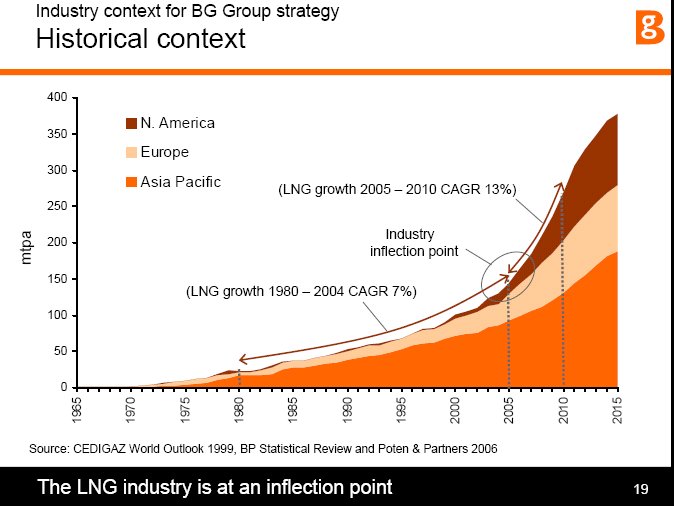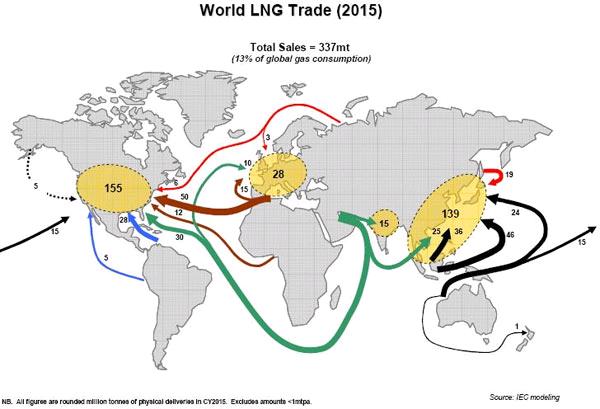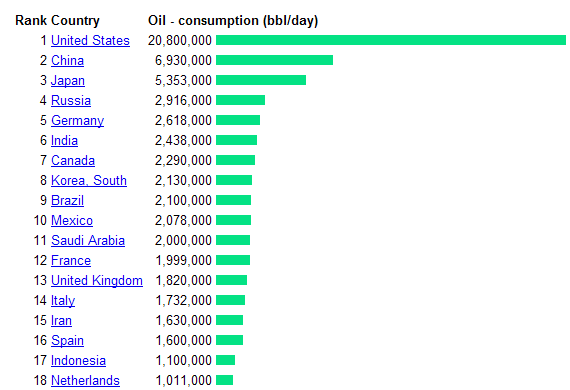The Coming LNG Energy Economy

Very comprehensive study of LNG











Note The Strategic Ellipse

Known North American Deposits:


Very comprehensive study of LNG











Note The Strategic Ellipse

Known North American Deposits:



Drill Baby Drill


and corresponding growth in production

Context of Numbers:
Annual Consumption of NG in the US is now at 22 TCF  1.85 TCF is .08 years worth. Note that
some recent industry estimates suggest that the USGS is wrong by more than a factor around
100 and say that 165 TCF is available
1.85 TCF is .08 years worth. Note that
some recent industry estimates suggest that the USGS is wrong by more than a factor around
100 and say that 165 TCF is available  BFD: that's still only 8 years worth.
BFD: that's still only 8 years worth.
US uses 21 MBD of oil. So in 47 days the US uses 1 Billion Barrels of Oil. Do we care that there are 3.65 Billion Barrels (about 6 monnts worth) in the Bakken Formation?
Bottom Line: Like the short sighted numbskulls that we are - we will likely try to fully exploit the very small Bakken resource instead of consuming less or investing more in renewable energy implementation.

 therefore large scale
infrastructure projects are needed. Note the dramatic imbalance for the US.
Clearly if LNG is our future energy plan, then large scale importation is
mandatory.
therefore large scale
infrastructure projects are needed. Note the dramatic imbalance for the US.
Clearly if LNG is our future energy plan, then large scale importation is
mandatory.

In particular, this is scheduled for completion in 2010 and is a very big deal:

This has major energy policy implications for the EU and certainly will increase there dependence on Russia and Russian Natural Gas. There is also a propose extension of this pipeline to the UK but not building activity on that extension has started (yet).
 So here is the Russian opportunity.
So here is the Russian opportunity.
 Again,
more infrastructure.
Again,
more infrastructure.


Green = current exporter of LNG; Blue = potential exporter
Look at Russia to see the obvious future



Qatar




In 1993 natural gas was used to generate 9% of the electrical power consumed in the United States. In 2003 that figure was 18%. But look now:


 Nameplate capacity of NG exceeds coal!
Nameplate capacity of NG exceeds coal!
 Planned capacity additions are heavily weighted towards NG
Planned capacity additions are heavily weighted towards NG
This is our Energy Trajectory!
Natural Gas as Electricity (heat water) is only somewhat cleaner than coal-fired electricity:
Emissions:
1135 lbs of CO2 per MWh  1/2 as much
from Coal.
1/2 as much
from Coal.
0.1 lbs of SO2 per MWh  1% that of Coal.
1% that of Coal.
1.7 lbs of NOx per MWh  1/3 that of Coal.
1/3 that of Coal.
Demand is clearly rising, both in the US and elsewhere:


To feed the increasing demand, liquefied natural gas (LNG) terminals are being proposed, to enable imports for the remaining natural gas, now that oil production has started peaking globally.
Natural gas is expected to peak globally around 2020, which could lead to serious global conflict as China and other large and growing economies continue down the path of increased dependance on fossil fuels. The U.S. has 4 existing LNG terminals and at least 46 additional LNG terminals are proposed, though some have estimated that only 6-8 are needed to meet demand.

 not much
help there
not much
help there
 strong potential source
of LNG imports.
strong potential source
of LNG imports.
Growth, Growth, Growth:




A real one in Canada nearing completion:

The Netherlands
The Phillipines
